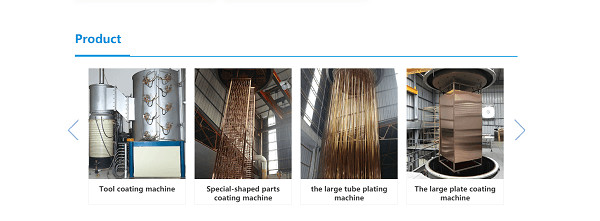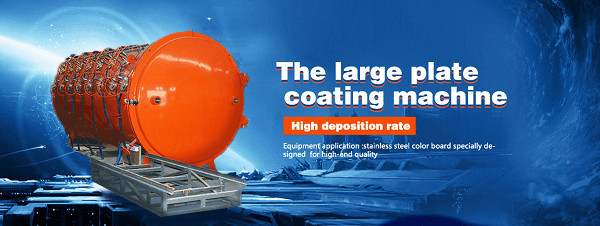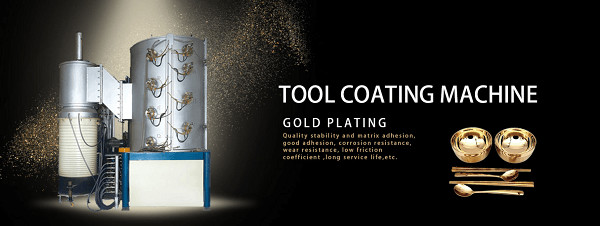Study on the effect of sulfidation temperature after preheating precursor on the properties of Cu2ZnSnS4 film
The Zn/Sn/Cu precursor was deposited on the glass substrate by magnetron sputtering. The precursor was heated to 350℃ in a quartz tube for preheating for 30 min, and then sulfur powder was used as a sulfur source to preheat the precursor. The metal precursor is sulfided into Cu2 ZnSnS4 (CZTS) film. The effects of different vulcanization temperatures (500, 540 and 580℃) on the properties of CZTS films were studied. X-ray diffraction, Raman spectroscopy, scanning electron microscope, energy spectrum analyzer, energy scattering spectrum and ultraviolet-visible-near infrared spectrophotometer were used to characterize the phase, surface morphology and optical properties of the film. The results show that CZTS films have been successfully prepared at different vulcanization temperatures, and all have a (112) crystal plane preferred orientation.
As the vulcanization temperature increases, the grain size in the film increases significantly, and the crystallinity also increases. When the vulcanization temperature is increased to 580°C, the grain size in the prepared film can reach more than 1 µm. The band gap of the films prepared at different vulcanization temperatures are all close to 1.5 eV.
Copper zinc tin sulphur (CZTS) is a quaternary compound with a kesterite structure. Its band gap is about 1.48 eV, which is very close to the optimal band gap (1.5 eV) required by solar cells. CZTS is a direct band gap semiconductor material and has a large light absorption coefficient (greater than 104 cm-1). Therefore, when used as a solar cell absorber layer, the required CZTS film thickness is small (about 2 μm). The elements in the material are rich in the earth's crust, the ingredients are non-toxic and environmentally friendly. In addition, the theoretical limit conversion efficiency of CZTS is 32.2%. Therefore, CZTS is very suitable for the material of the solar cell absorber layer.
vacuum coating machine,pvd coating machine,pvd vacuum machine,vacuum ion coating machine,multi-arc ion coating machine
At present, the main methods for preparing CZTS films are: spray pyrolysis, two-step preparation, electrodeposition, co-evaporation, sol-gel, magnetron sputtering, reactive co-sputtering, ink and pulsed laser deposition Law etc. In 1996, Hironori Katagiri of Nagaoka National University of Science and Technology in Japan prepared the world's first CZTS thin-film solar cell by sputtering Cu /Sn /Zn metal multilayer film and subsequent vulcanization. The cell conversion efficiency was only 0.66%. In 2001, the H. Katagiri research group of Nagaoka University of Technology in Japan successfully prepared SLG/Mo/CZTS/CdS/AZO/Al structure solar cells by electron beam evaporation of Zn/Sn/Cu metal precursor and subsequent vulcanization method. The efficiency is 2.62%. In 2007, H. Katagiri's research group used radio frequency co-sputtering to deposit Cu/SnS/ZnS metal precursors, and then in-situ followed by vulcanization to prepare CZTS cells with an efficiency of 5.74%.
In 2010, K. Wang of IBM in the United States used thermal evaporation to prepare solar cells with a structure of SLG/Mo/CZTS/CdS/i-ZnO/TCO/MgF2/Ni-Al, with a conversion efficiency of 6.8%. In 2011, the conversion efficiency of CZTS solar cells prepared by thermal evaporation by B Shin of IBM Corporation of the United States reached 8.4%. In 2012, the conversion efficiency of CZTSSe solar cells prepared by D. Aaron R. Barkhouse of IBM Corporation in the United States exceeded 10%. In 2013, Winkler et al. changed the thickness of cadmium sulfide to achieve a CZTSSe solar cell efficiency of 12.0%. In the same year, IBM's Wang Wei produced a CZTSSe battery with an efficiency of 12.6%. The CZTS film prepared by the two-step method is prone to volatilization of Sn element during the subsequent vulcanization annealing process. On the one hand, it will cause the mismatch of the element ratio; on the other hand, the volatilization of Sn will also cause local element unevenness, and even small holes or micro-cracks in the grain boundaries, which will eventually lead to the degradation of the film quality. Although the content of Sn in the precursor can be increased to compensate for the volatilization during the subsequent vulcanization process. However, the influence of the volatilization process on the uniformity and compactness of the film cannot be solved. If the metal precursor is sintered for a period of time before vulcanization, some relatively stable binary or ternary alloy phases will be formed between the metals. This can prevent the volatilization of Sn, which can improve the performance of the film. However, the effect of increasing the preheating conditions on increasing the size of the crystal grains is not obvious. Increasing the grain size can effectively reduce the recombination of grain boundary carriers and improve the conversion efficiency of thin film batteries. Therefore, this article studied the effect of different vulcanization temperatures on the properties of the prepared CZTS films based on the optimized preheating conditions.
1. Experiment
vacuum coating machine,pvd coating machine,pvd vacuum machine,vacuum ion coating machine,multi-arc ion coating machine
First, the MSIB-6000 magnetron sputtering-ion beam sputtering integrated machine was used to deposit the Zn/Sn/Cu metal precursor on the glass substrate. Before growth, the glass substrate was ultrasonically cleaned with acetone, alcohol and deionized water for 5 min, and then dried with N2. The sputtering powers of Zn, Sn and Cu targets (all with 99.999% purity) are 20, 30 and 50 W, respectively. During the sputtering process, Ar is continuously introduced as the working gas, the flow rate is set to 20 mL/min (standard state), and the substrate temperature is room temperature. The thickness of the sputtered Zn, Sn and Cu three-layer metal is 120, 140 and 107 nm, respectively. Then, the glass substrate on which the metal precursor was deposited was placed in a quartz tube, heated to 350°C at a heating rate of 10°C/min, and kept for 30 minutes, as the alloying preheating treatment of the metal precursor. Finally, the preheated metal precursor was vulcanized at different vulcanization temperatures (500, 540 and 580℃) for 2 hours, using sulfur powder (purity 99.999%) as the sulfur source, and N2 gas was continuously introduced throughout the process (Vulcanization as shown). The samples prepared at different curing temperatures are numbered S500, S540 and S580 respectively. The phase structure and crystalline properties of the samples were analyzed by X-ray diffractometer (XRD) and Raman spectrometer (Raman), the surface morphology of the samples was observed by scanning electron microscope (SEM), and the X-ray energy spectrum analyzer (EDS) ) Test the element ratio of the film, and finally use the UV-vis-NIR spectrophotometer (UV-vis-NIR) to test the optical properties of the sample.
CZTS film vulcanization process diagram
3. Conclusion
vacuum coating machine,pvd coating machine,pvd vacuum machine,vacuum ion coating machine,multi-arc ion coating machine
(1) The samples preheated at 350°C for 30 min were vulcanized at different temperatures (500, 540 and 580°C) for 2 hours to obtain CZTS films without impurity phases, and all of them had (112) crystal plane preferential growth. As the vulcanization temperature increases, the main peaks of 288 and 338 cm-1 become obvious and sharp, and the crystallization performance of the CZTS film improves.
(2) As the vulcanization temperature increases, the crystal grains of the prepared CZTS film increase. When the vulcanization temperature is lower, the surface grains are smaller. When the vulcanization temperature rises to a certain level, large grains are formed on the surface first, and when the vulcanization temperature is 580°C, the maximum grain size reaches 1 µm or more. As the vulcanization temperature continues to increase, the small crystal grains in the lower layer gradually transform into large crystal grains. However, when the vulcanization temperature is too high, Sn will volatilize, and obvious holes will appear at the interface between the CZTS film and the substrate.
(3) The band gap of CZTS film increases with the increase of vulcanization temperature. The band gap of samples cured at 500, 540 and 580℃ are 1.47, 1.52 and 1.53 eV respectively, which is close to the best band gap of 1.5 eV .
vacuum coating machine,pvd coating machine,pvd vacuum machine,vacuum ion coating machine,multi-arc ion coating machine
Founded in 2015,Zunhua Baorui Titanium Equipment Co.,Ltd. is a manufacturer specializing in pvd vacuum ion coating equipment. The company’s products mainly include large plate coating machine, large tube collating machine, tool coating machine and LOW-E glass production line. Mr.Wang baijiang ,general manager of the company ,has been engaged in vacuum coating industry for more than 30 years. He continuously improve production technology, improve product performance and devote himself to provide customers with better product experience and higher production efficiency.





